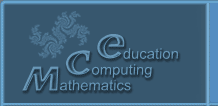|
|
PresentationsThe linguistic personality of the paleontologist I. A. Efremov in the ideographic aspectFederal State Autonomous Educational Institution of Higher Education "State University of Education", Russia, 105005, Moscow, st. Radio, 10A, p. 2. Natasha.zhuravleva99@mail.ru One of the methods for studying the linguistic personality of a paleontologist is the Ideographic Frequency-Grammatical Dictionary by I.A. Efremov. The denotative-ideographic spheres of the dictionary are arranged under the headings Man, Nature, Science. The purpose of the study is to identify representatives of the scientific picture of the world of a paleontologist in the artistic text of "space" novels. The denotative-ideographic spheres "Science" and "General Concepts" of the dictionary of the language by I.A. Efremov include the lexical-semantic groups "types of sciences", "physical concepts", "chemical concepts", "mathematical concepts", "technical concepts", "complex equipment", "tool", "device", "weapon", "technical processes", "construction objects", "building materials", "medicine", "time", "quantity", "matter", "measurements", "process". These spheres include 2072 lexemes in the "space" novels of I.A. Efremov, which is 30% of the nominations of all objects of the unreal reality of the futurological model of civilization, and 94222 word usages - 57% of all 200000 word usages in the "space" novels, which characterizes I.A. Efremov as a science fiction writer whose goal is to predict the future. The frequency-grammatical markup of the corpus made it possible to identify lexemes with a high frequency index in the denotative-ideographic sphere of "Science". They are divided into lexical-semantic groups as follows: physical concepts - beam, light, force, speed, energy; technical concepts - starship, system, complex equipment - machine; construction objects - door, road, hall, station, wall, room. Of particular interest is the denotative-ideographic sphere "General concepts", in particular the lexical-semantic field "Process", which contains more than 300 lexemes, for example, landing, engraftment, coercion, dulling, attraction, seepage, translucence, fragmentation, drooping, observance, etc. The number of word usages in this sphere characterizes the scientific thinking of the science fiction writer. The core of the nominative field of "space" novels are terms. The method of distribution analysis is used to characterize and classify the linguistic means of I.A. Efremov's scientific picture of the world. Substantives form a terminology system (catalyst, resonance), and also include abstract vocabulary (interaction, change, manipulation). Predicates are distributed among the lexical-semantic groups "state", "action", "position", "impact". Adjectives are an axiological segment of the lexical-semantic fields "Man", "Nature", "Science". Semantic features reveal the scientific type of thinking of I.A. Efremov. His philosophical novels are aimed at creating a model of the future.
Presentation |

